Anyone who cares for cichlid species knows that feeding them is one of the best parts of keeping them.

But, what’s the best food for your cichlids if you want to improve their growth rate and colors?
Should a healthy diet include vegetables, forms of cyanobacteria such as spirulina, or live treats? The answer to this varies on the type of fish of course. If you’re the owner of South American cichlids, it could be quite different than if you’re keeping the gorgeous African cichlids coming from Lake Malawi.
Even with a decent amount of research, you start getting inundated with more questions as things go along. Should you go for pellets or flake meals? What brand suits Mbuna species the most? Should you get something specific if you have a species-centered tank such as one housing primarily peacock cichlids? What sort of foods should I get if I’m raising baby fry and want to kickstart their growth? Is there something else you should consider?
I’m going to attempt to answer these and more questions throughout this article.
We’re also going to take a look at the best foods for growing massive African cichlid species.
So, without further ado, let’s get to it.
The Top 15 Cichlid Foods for Explosive Growth and Color
Here’s a quick overview chart of the Cichlid foods being reviewed here:
| Food Name: | Type: | Recommended for: | Price bracket: |
|---|---|---|---|
| 1. TetraCichlid Floating Cichlid Sticks | Pellet Sticks | Medium to Large Cichlids | $ |
| 2. Aqueon Cichlid Food | Pellets | Cichlids With Smaller Mouths | $ |
| 3. Omega One Veggie | Pellets | Mbuna and Other Herbivorous Cichlids | $$ |
| 4. TetraCichlid Balanced Diet Flakes | Flakes | African Cichlids | $ |
| 5. Omega One Super Color | Pellets | All Juvenile Cichlids | $$$$ |
| 6. Hikari Cichlid Gold Floating Pellets | Pellets | All Juvenile Cichlids | $$$ |
| 7. Hikari Cichlid Gold Sinking Pellets | Pellets | Large South American Cichlid Species | $ |
| 8. TetraMin Balanced Tropical Flakes | Flakes | Mixed Cichlid Communities | $$ |
| 9. API Fish Food | Pellets | Slow-Feeding Top-Dwelling Malawi Cichlids | $$$ |
| 10. Repashy Soilent Green | Gel Premix | Malawi Herbivorous Cichlids Such as Mbuna | $$$$ |
| 11. Zoo Med Spirulina 20 | Flakes | All Cichlids | $$ |
| 12. Omega One Freeze Dried Blood Worms | Freeze-Dried Treat | All Cichlids | $ |
| 13. Northfin Fry Starter | Powder | Cichlid Fry | $ |
| 14. New Life Spectrum Cichlid Formula | Pellets | All African Cichlids | $$$ |
| 15. Fluval Bug Bites | Pellet-like Pieces | Carnivorous and Omnivorous Cichlids (Only as a treat for African cichlids) | $$ |
A Beginner Guide on Cichlid Food and Its Role In Their Development
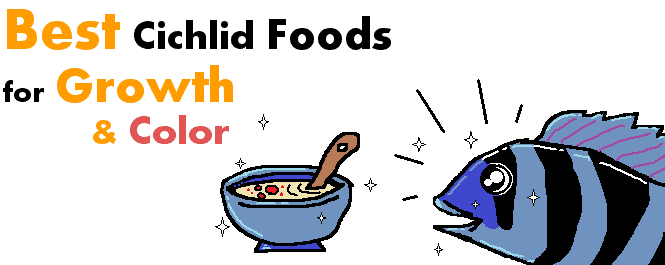
Way back when I originally got into aquariums, I initially did it under the idea of caring for a wide range of cichlids.
I enjoyed the concept of keeping a variety of fish happy and healthy outside of their natural ecosystem through my efforts, and cichlids were some of the first fish species I fell for.
However, I found the amount of actual information available on the Internet for the proper feeding of these fish is limited. For this reason, I have prepared this short guide on how to choose the right food for your cichlids:
1. Watch out for too much Meat
Here’s what you should know about feeding cichlids meat:
Most cichlids are omnivorous, meaning that they ideally subsist on a good combination of meat and plant-based foods.
Where this can go awry in cichlid tanks is when too much meat-based food is introduced into their digestive systems.
Although considered omnivores, African cichlids are primarily herbivorous, which means they possess longer intestines.
Though meat food can induce faster growth, too much of it could cause a disease called The Malawi Bloat which is almost always fatal without immediate and expert care.
For African cichlids, meat-based foods should be given sparingly, mostly as a treat, and no more than twice a week, but preferably once.
It should be noted that there are some carnivorous South American cichlid species, which can consume meat as their main source of nutrients.
2. Vegetables as a Source of Fiber for a Better Digestion
Fiber is excellent for your cichlids.
This can take many forms, ranging from specialized pellets and flakes to simply using veggies as a source of fibers that can be dropped into the tank during feeding hours.
That being said, here’s what you should know about providing homemade or homegrown vegetables for your aquarium cichlids:
A good amount of vegetables throughout the week is an excellent way to keep your cichlids happy, and their digestive tract in good working order.
Improved digestion helps with breaking down foods, which in turn speeds up the growth rate of your Cichlids.
Even the carnivorous species would benefit from the occasional veggie, as it is an outstanding source of fiber for the fish.
Just remember – if you end up boiling the veggies don’t add any seasoning to it.
3. Stick to a Regimen and Don’t Overfeed
The general regime rule for feeding cichlids is:
Feed cichlid species as much as they will eat in about 2 minutes and leave nothing behind, once or twice a day.
Mastering the right dosage is key here, because if adequately offered, the multiple meals could improve the growth of your pet fish even further.
Issues with overfeeding come up with inexperienced owners not understanding that cichlids will eat just about anything put in front of them, even if it’s to their detriment.
Remember that even though these fish may constantly look hungry, they’ll be fine waiting for their next meal.
A good way to set a certain amount of food per offering without worrying about spilling too much is using the so-called programmable automatic fish feeder.
This device releases a set amount of food on a timer, which can come in extremely handy if you’re a beginner and don’t want to take risks with overfeeding, such as raised Ammonia levels in the aquarium water.
It also is an outstanding help in maintaining a fish feeding cycle while you’re out of town.
I have not done a head-to-head test with all of them but one automatic feeder that I personally trust is this one from Eheim (visit the link to see the device on Amazon.com).
4. How to Decide Between Flakes and Pellets
The size and temperament of the cichlid species you keep should influence the type of food they should be fed with.
This is especially true in a tank with a decent amount of denizens swimming around it.
Here’s what to know about choosing between pellets and flakes when feeding cichlids:
Shy or juvenile cichlids can have trouble with large pieces of food or keeping up with big heavy eaters.
Most flake foods are ideal in that situation, as they are able to be eaten quickly and float around the water column for longer.
However, pellets tend to bring a more nutrient-dense offering and are ideal for larger and bolder cichlids.
5. Sparingly Offer Live Foods
Or not at all.
The problem with live food treats and cichlids is sort of two-fold:
Firstly, live food treats throw the diet of your Mbuna cichlid fish, for example, off course slightly.
Most of the time this isn’t a long-term issue, but you’re risking potential digestive issues that may end up being fatal in the most extreme cases by adding weird proteins to the mix randomly.
Secondly, there’s the issue of parasites.
A lot of store-bought live foods may sometimes be riddled with nasty parasites that can cause serious harm to your fish.
Also, it’s generally advisable to stay away from live Tubifex from the pet store.
Nine times out of ten you won’t run into these issues, but you must ask yourself if it is really worth the risk for no added benefit to your fish.
6. Spirulina is an Excellent Food Source for Cichlids
I didn’t really know what Spirulina originally was when I was browsing around for cichlid foods.
I saw it come up a lot in the ingredients of the higher quality foods, so I eventually did a bit of research on it.
Spirulina is a type of cyanobacteria that’s ridiculously rich in both plant-based protein AND fiber, which can be ideal for herbivorous and omnivorous Cichlids.
It’s great because it’s sort of a best of both worlds type of food that covers most of the bases for cichlid diets.
Protein contents could go up to 60g per 100 grams, which is almost 3 times higher than the protein content of 100 grams of beef.
Furthermore, there’s a study suggesting that a diet supplemented with spirulina improves the immune response in Cichlids against viral infections.
Digging deeper I stumbled upon more scientific research showing that regularly feeding spirulina to cichlids improves their growth rate, enhances colors and improves egg production and hatching rates.
Plus, my fish seem to like it, though they seem to like just about anything.
It’s a solid and simple food choice.
In this article, I’ve listed my top pick for a Spirulina-based Cichlid food further down below.
Best Foods for Cichlids That Need a Boost in Growth and Color – Reviews
I’ve probably tried over 30 products in an attempt to identify the top Cichlid foods. On top of everything else, cichlids can be among the most colorful fish in the freshwater aquarium hobby if fed properly.
The truth is, as long as you’re not doing a bizarre overfeeding schedule and they’re getting a good amount of fiber they will be alright.
That being said, to get large fish and to really make them thrive you should take some time to make an adequate choice.
Here are the 15 best cichlid foods for improved growth:
1. TetraCichlid Floating Cichlid Sticks – My Top Pick For Medium to Large Cichlids
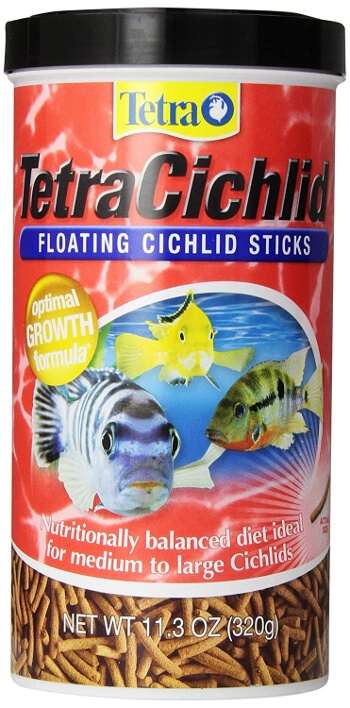
Click here to see the current price + more photos on Amazon.
So, these were recommended to me by a friend that has a tank with quite a few very large Oscars.
They seem pretty happy, so I figured mine would be as well. So far, so good.
This is for fish who need a pretty protein-rich diet, it’s very dense, and will last you quite a while.
The pros here are that medium to large-sized species of Malawi cichlids or Oscars really respond to this food. You get a decent amount for your money, and it adds a lot of important nutrients to their diet.
My observations show that it is also one of the best products for any big African cichlids and the husky ones I’ve seen to get fed with it seem to think so as well.
It’s a deceivingly simple product, not that that’s a bad thing, as the formula for these contains a wide variety of supplements to promote growth and coloration alongside a fairly balanced diet.
As far as the best food product for cichlids that really focuses on their continuous growth, this one is up there.
The cons are that you should probably supplement this with some fresh-cut veggies for some of their meals to ensure proper fiber content, but I personally enjoy that process.
The brand is well-known and offers flake types and other sizes for smaller and younger cichlids as well.
A very solid choice for anyone raising big cichlids.
2. Aqueon Cichlid Food Pellets – Budget option for Species with Smaller mouths

Click here to see the current price + more photos on Amazon.
Here’s a good budget-friendly option from a decent brand.
You get a large number of pellets for what you’re paying, and the material makeup is fairly solid.
My African cichlids, who to be fair are not exactly “picky” eaters, actually seem to respond well with this and their small size even allows for juveniles to get in on the frenzy.
The Aqueon cichlid food contains plenty of complex proteins and good oils to ensure solid growth as well, and even enough to maintain some pretty flashy colors.
Cichlids let you know what the best foods are for them pretty readily, and I’ve had no complaints on that end.
You should probably supplement this with freshly cut veggies, which is a bit of a pattern you’ll notice on a lot of the foods on this list.
The only real complaint I would have on these is that “slow-sinking pellets” basically translates into floating pellets.
This means you need to be careful not to drop too much during a single feeding, in case some of your cichlids don’t like going for the surface.
You don’t want these bobbing around messing with your aquarium water’s chemistry all day.
If funds are a concern and you don’t want to make too many concessions for the health of your fish, you can buy the Aqueon Cichlid Food Pellets and call it a day.
3. Omega One Veggie – Mbuna Cichlids LOVE it
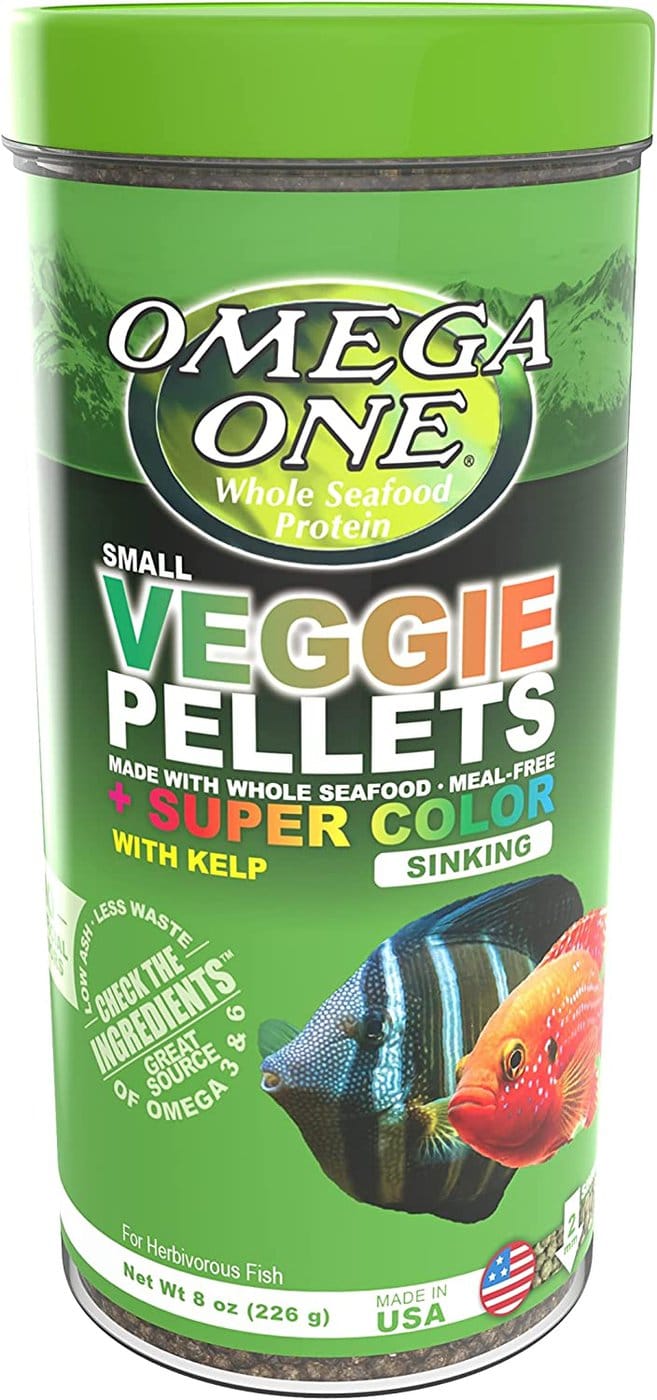
Click here to see the current price + more photos on Amazon.
Vegetable-based fish foods are much rarer on the market than the complex protein pellets and flakes, and good ones rarer still.
Luckily, Omega One is well aware.
But I will start this review with a bit of criticism towards their product.
Interestingly enough, Omega One have put a little bit more meat ingredients than I’d consider ideal in their VEGGIE Pellets formula.
The main diet of Mbuna cichlid species is consisted of plant matter.
For this reason I’d like to rotate this food with something that’s made for entirely herbivorous cichlids (read further to see which foods I recommend for that).
I offer the Omega One Veggie pellets up to 3 days a week.
So why I’m using this then?
Well, it seems that the Veggie pellets’ plant-based ingredients are well-chosen and the vitamin content seems on point.
This cichlid food contains spirulina which, to me, is a major selling point for any African cichlid food.
Spirulina is a superfood and provides herbivorous cichlids a good deal of healthy fiber for their digestion.
Another great thing about this product is that no artificial flavors are used.
In my opinion, artificial flavoring should be avoided when it comes to feeding wild animals altogether.
So another big plus for Omega One here.
My Malawi cichlids adore this particular brand of food and their colorations have really started to shine since I began to use this as a staple of their diet.
Typically, nothing is left behind when I’m offering this… Also, no mess!
I recommend the Omega One Veggie Pellets to anyone who comes to me with a Mbuna tank, for real.
The pellets sink relatively slow and although small-ish I would not put a limit on what size cichlids should consume them.
Author’s note: Slow sinking can sometimes be an issue if you have particularly shy bottom feeders, so make sure everyone is getting their fill.
Price-wise, it’s not astronomical, but it’s not a budget choice either.
All in all my Malawi cichlids and I really like this stuff, and I use it in my own display tanks to let my fish really glow.
4. TetraCichlid Balanced Diet Flakes – Probably the Best Overall Score

Click here to see the current price + more photos on Amazon.
Another one from Tetra.
They’re popular for a reason, you know?
Overall review-wise, this is probably the best food for growing African cichlids and other mid-water feeders on this particular list.
This is also one of the best values I’ve seen as well, 1 ¾ lb tub for this price is hard to beat.
The actual flakes are of good quality, with thought put into the ingredients.
This fish food has everything needed for solid Cichlid growth, and as a staple or base food, it should promote a fairly healthy life for your fish.
Like the other Tetra product, from earlier in the list, some amount of fresh vegetables is recommended to ensure your fish are getting all the fiber they need.
The biggest problem you can get with this, like with all flake foods, is user error.
Overfeeding can cause some problems with water balance and fish health.
Furthermore, and even though Tetra provides a pretty solid container for this food, be careful how you store this many flakes.
Water getting into the mix or if it is kept in an overly humid area can cause some long-term issues with your supply.
This is a problem with any large amount of food, fish, or otherwise, but I figured I should mention it since the container is so large.
Anyway, an overall fantastic product.
5. Omega One Super Color – For Vivid Coloration in Young Specimens
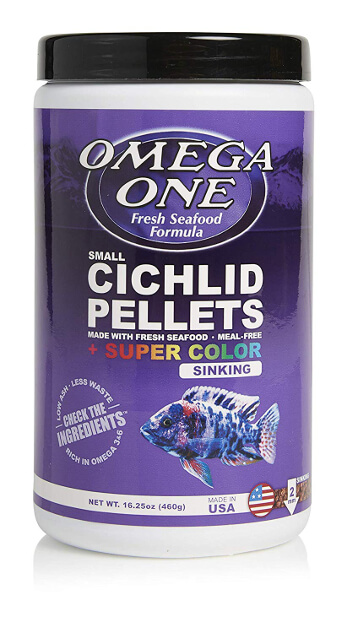
Click here to see the current price + more photos on Amazon.
Here is one of the best I’ve found for balanced dietary needs.
I like these because not only does it come with a lot of complex proteins and fats, but there’s a fair amount of spirulina, and plant matter in the mix to help your cichlids with digestion.
The small size makes them ideal as a staple in the diet of small cichlids that come from lake Malawi, or any smaller cichlid that you’re trying to get some growth out of.
My fish responded well to the introduction of this one, which makes sense when you consider the ingredients.
This food is full of quality stuff, including Omega 3 and Omega 6 fatty acids and even spirulina.
Evidently, that mix resulted in some very vivid colors for my Malawi species, alongside a decent growth rate.
The Omega acids are supposed to help the fish with their immune system, and mine looked very healthy and appeared even more energetic than normal.
I think it may be important to mention that this fish food also smells good, even to my human sensibilities, which is a nice change of pace.
The price point is also surprisingly affordable, considering it has ingredients that rival even the highest-end brands.
Issues, again, can arise through improper storage.
I usually put food like this in a separate container, such as a mason jar, to keep it pristine.
You don’t want it getting wet, it deteriorates fairly rapidly once compromised.
Also, these actually sink pretty quickly.
Watch out for your midwater feeders and try to aim some close to them as you do your daily feedings.
Sprinkle small amounts multiple times to make sure everything gets eaten before it sinks.
6. Hikari Cichlid Gold Floating Pellets – Jump Start for Juveniles

Click here to see the current price + more photos on Amazon.
These ended up in my food rotation for a while due to difficulty finding a good floating pellet my juvenile Tiger Oscars would respond to.
They were having trouble with my previous food, as it was sinking a bit too fast and they weren’t very good at finding food on the bottom.
These worked handily.
As I see, other users too confirm the results when I got in their online reviews.
Anyway, these pellets also ended up being some of the best food I’ve found to boost the growth rate of my juvenile African cichlids.
Just make sure to supply homemade vegetables as a source of fiber (no seasoning!).
The biggest issue I had here was that they’re a bit small for larger fish, and they should be supplemented by either vegetables or some sort of algae to ensure proper digestion.
Still, it’s a great protein-packed floating pellet.
It can easily be used as a staple diet for many types of cichlids.
Another thing to consider is that this is not the most budget-friendly option on the market.
The quality is top-notch, and the fish grow very quickly, but this is twice the price of other brands on this list.
Buy this food if you want to feed your Oscars or cichlids premium quality floating pellet food and you don’t really mind paying a little more.
7. Hikari Sinking Cichlid Gold Pellets – For large South American cichlids
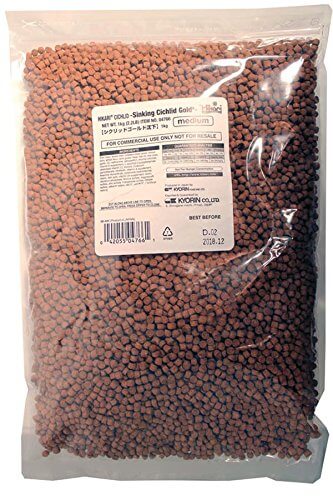
Click here to see the current price + more photos on Amazon.
I figured I’d follow up on the last Hikari recommendation with this one, which I tried around the same time.
I like to stick to a certain brand when I’ve had success with it, a lot easier to see what’s working and what isn’t that way.
Anyways, this was for improving the diet of my South American Cichlids.
They found these particular pellets fairly palatable, I think.
The protein mix is solid in this Cichlid food, and the amount you get for the price is absolutely a good deal. Nutrient-wise, this food was sufficient to get some decent growth out of them over its tenure in the tank.
It’s a good middle-of-the-road budget brand.
There’s nothing spectacular going on here, but there’s nothing too bad either.
As usual, if you’re feeding this to African cichlids, vegetable or algae supplementation is recommended for any of these protein-based foods.
8. TetraMin Tropical Flake Food – For mixed cichlid species aquariums
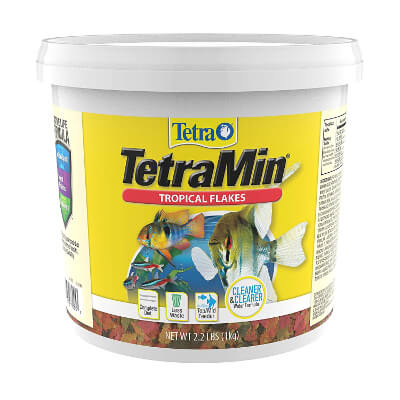
Click here to see the current price + more photos on Amazon.
Another Tetra product, they make quality food what can I say?
I like this purchase because I was looking for a bulk product that would be good for multiple cichlids, including my Malawi.
This was for a mixed species fish tank, and I wanted something that everybody would enjoy.
This seemed to do the trick.
The fun thing about adding this to a mixed tank is the literal frenzy of fish coming from all directions trying to gobble up as much as they can.
It’s quite cool to watch.
Beyond that, it’s a well-balanced food for most types of cichlids, which is nice.
My Mbuna cichlids reacted particularly well to this food, showing faster growth and enhanced bright colors.
Same issues on this one that apply to pretty much every flake and fish food on the market.
Watch your storage, especially in bulk, as deterioration can happen in a wet environment.
Also, regular algae and vegetables really help make up for the lack of fiber in most fish food.
Aside from a balanced meal consisted of both some fiber and a healthy dose of protein, this cichlid food comes at an excellent price.
Buy this food for your cichlids if you have a large aquarium housing a diverse mix of species.
9. API Fish Food Pellets – For community tanks with slow top feeders

Click here to see the current price + more photos on Amazon.
So, here’s another one of the foods with a ton of outstanding reviews I checked out.
I actually had a couple of reservations when I initially checked it out due to some idea in my head that made me think that food that is cleaner for the water might be worse for my fish.
Spoilers: that’s not true at all.
This food is fine, and I actually recommend it for aquariums with slower top-feeding fish.
This food is also a fantastic choice as pellets for Malawi cichlids because it fits right into their natural diet, and it stays together longer than some of the other pellets I’ve tried that tend to dissolve a bit too quickly for some of my fish.
A quick note here, some customers have said the formula has changed recently.
I haven’t noticed anything personally, but it’s something to keep in mind.

Click here to see the current price + more photos on Amazon.
All the previous entries to this list have been pretty effortless ways to feed your fish, but a lot of them should be supplemented with certain greens and the like to ensure proper digestion.
Soilent Green, however, does not suffer from these issues.
This stuff is absolutely amazing.
It’s a complete algae-based diet replacement that covers all the protein and fiber that your cichlids need.
Some of the best quality food I’ve seen, seriously.
It’s nice to see something on the market besides pellets and flakes.
The only downside is there is a bit of work involved before feeding this to your fish.
One part Soilent Green powder to 3 parts boiling water, let it cool or pour into a mold and then finally store it in the fridge or freezer.
Don’t let it keep too long – treat it like any other fresh food and keep it for no longer than 2 weeks for best results.
I can see people having problems here if they don’t want to put that much work into feeding their fish. However, this food may very well be one of the best for enhancing both the growth and coloration of your Cichlids.
Buy this food if you’d like to make your African or Mbuna cichlids extremely happy.
11. Zoo Med Spirulina 20 – Enhances colors nicely
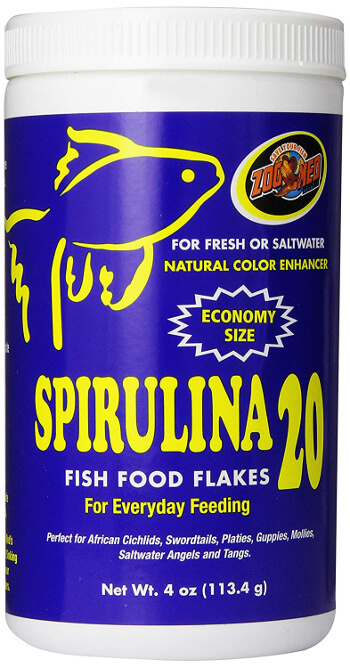
Click here to see the current price + more photos on Amazon.
I was looking for a good and inexpensive Spirulina source for a bit before I found these guys.
The reviews looked good so I ordered them for my African cichlids whose colors weren’t all they could be.
I’d say these were a solid purchase.
Coloration improved after just 2 weeks, as expected, so the food is at the very least exactly what it claims to be. On top of that, the growth rates of my Cichlids also improved, probably because of the Spirulina itself.
The issue I had with it, on the other hand, was that a lot of the spirulina was pretty crushed up by the time I received it.
I couldn’t use a decent amount of it because it was dissolving into the water fairly rapidly when they were that small.
All that being said, it was still a good value purchase at the price point they sell it at and the product is legitimate.
It might have even been my mail carrier’s fault, who knows?
Buy this food if you have cichlids that are just about to breed or if you’d like to just get them something for their colors.
In my experience, you’ll see a noticeable improvement in coloration in just about 2 weeks.
12. Omega One Freeze Dried Bloodworms – Best for an Occasional Cichlid Treat
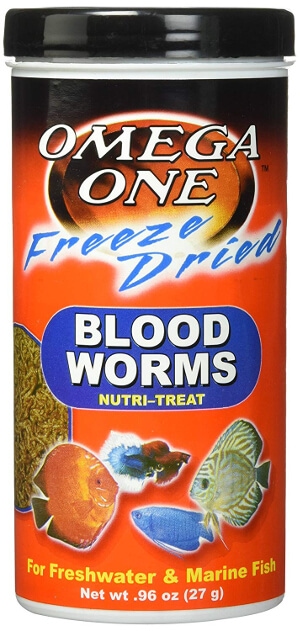
Click here to see the current price + more photos on Amazon.
I said earlier that using bloodworms as a staple diet isn’t a great idea for most cichlids, and I stick by that.
However, they really do seem to enjoy them.
Live foods are a no-no but some quality freeze-dried foods from time to time can be pretty fun for both you and your fish.
This particular brand has always been pretty solid, they deliver a good product with no risk to your cichlids.
I bust these out seldom when showing off some of my bigger, hungry fish to friends.
They go crazy for them.
13. Northfin Fry Starter – Best for Cichlid fry
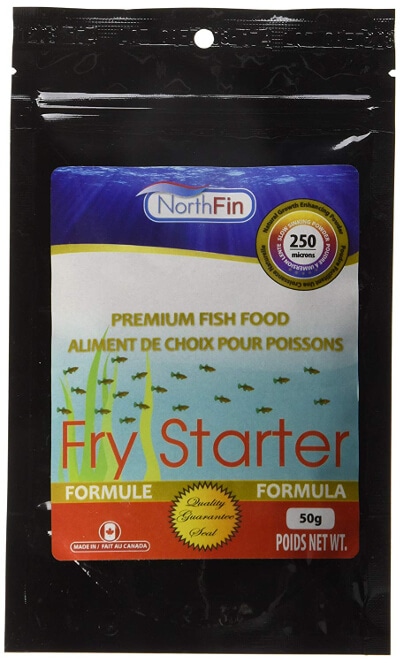
Click here to see the current price + more photos on Amazon.
A caveat to everything I’ve listed thus far, pretty much all of it is only suitable for at least semi-mature cichlids.
But what if you’re raising from fry?
That’s where Northfin comes in.
This food starter is 100% krill-based, with no fillers or anything else that might not go well with the young Cichlid’s diets.
This is ideal, which possibly makes Northfin Fry Starter the best food for cichlid fry in my book.
I haven’t had any issues with the actual quality of this product, but the packaging leaves a bit to be desired.
There’s no way to reseal this so I highly recommend putting the contents into a secondary airtight storage container after you open it.
Otherwise, it’s really hard to beat.
Plus, you get a whole lot for the price.
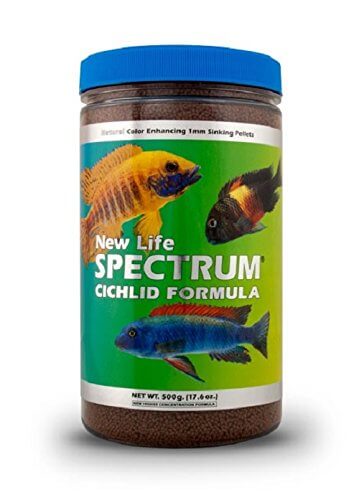
Click here to see the current price + more photos on Amazon.
I’ll start out by saying I was incredibly impressed by the ingredients of this product when I was reading about it, which led to my purchase.
Like, I borderline want to eat this stuff and I figured I might as well try the best for my African cichlids.
Using this food appropriately will likely get your Cichlids the best possible growth while bringing out their colors like nothing else.
I don’t think I’m overstating the quality of this particular product. My cichlids managed to grow an immense amount during my little “trial” period with this food.
Colors were almost glowing, as well.
The downside is the price and that the pellets are fairly small, which is an issue with certain fish when they get larger.
I still recommend the brand to anyone though.
You get a decent amount for the price, and even if you’re spending more than on other brands it’s not THAT much.
Your cichlid’s colors will pop, and it’s a great balanced diet offered here.
Buy the New Life Spectrum if you’re okay with paying a little more and getting the best from a food product that’s specially designed for cichlid growth.
15. Fluval Bug Bites – A Treat or as a Staple for South American species

Click here to see the current price + more photos on Amazon.
Fluval’s Bug Bites come in many shapes and forms but they eventually released a cichlid-centric formula.
As the name suggests, these are are pellet-like pieces that contain high amounts of insect protein.
This is welcome for most carnivorous and omnivorous cichlids, most notable the South American species.
From what I gather my cichlids would rather bite my arm off than wait for me to sprinkle the food pieces.
And yes, I’m calling them pieces since they’re not uniform pellets, some chunks are big and other – small.
To my delight, no matter the size of the piece, absolutely nothing reaches the bottom of the tank.
Everything gets gobbled up in splitseconds. And as for the effect this food has on the cichlids I feed it to:
My cichlids would exhibit decent growth eating this. The Fluval Bug Bites food is not necessarily color-enhancing for them but does give a good boost to their body size.
You can use this cichlid food if your pet fish are not into bloodworms.
I personally, offer it as a main course 3 to 4 days a week, and as a treat to omnivorous and herbivorous cichlids.
As a side note, this food can even be given to goldfish and won’d disappoint.
I think the word “cichlid” is in the name just so buyers are not confused if it’d work for their cichlids.
What Food to Pick for a More Pronounced Cichlid Color?
Bright colors are a helpful visual indicator of fish health and quality of life.
So, of course, you want to make sure they really shine.
Have a look at a couple of food options that are best for stimulating more pronounced colors in cichlids:
Quality fats and proteins tend to be the go-to, but you need to make sure to balance that with plenty of fiber to ensure healthy digestion in your pet fish.
I try to make sure all foods I talk about here fit that criteria, or I make sure to give a heads up about what it’s lacking.
That being said, if I had to pick just two food products from the list as the best for stimulating cichlid color I’d go with either New Life Spectrum Cichlid Formula or Zoo Med’s Spirulina 20.
New Life offers some amazing ingredients that cover fiber and vitamin needs as well as fats and proteins, but at a higher price point.
Zoo Med’s Spirulina 20 has an ingredient spread that is, in my opinion, top-notch and is great for coloration.
Especially considering it’s technically a budget option, given the spirulina contents.
What’s a Balanced Diet for Each Type of Cichlid?
An awareness of what cichlids should and should not eat on a regular basis is important for the best results of your fish-keeping efforts.
Here’s what makes up an ideal cichlid diet:
African cichlids
African cichlids are omnivorous feeders that need a varied diet of animal and plant-based foods. A good flake that covers multiple types of fats and proteins alongside something such as spirulina and plenty of veggies should be all that is needed.
Avoid things such as live foods or any type of mammal meat, as it can cause digestive issues leading to bloat.
Bloat is nearly always a death sentence and should be avoided at all costs.
Some species coming from lake Malawi, such as the Peacock cichlids have similar dietary concerns, however, they are mostly bottom feeders.
Sinking foods, are then, ideal as long as you make sure they get a good spread of veggies and proteins.
Mbuna’s diet, on the other hand, is almost solely vegetarian.
In nature, Mbuna cichlids subsist mostly on algae, so a similar diet in captivity is needed. Cyanobacteria mass such as Spirulina is, again, a good choice here, and any flakes or pellets that make up most of their nutrients from seaweed and other types of algae.
It’s advisable to seldomly (once a week) feed pure fish protein to Mbuna cichlids because it will help them with balancing out the intake of some vitamins.
South American cichlids
South American cichlids, on the other hand, are strictly carnivorous and will actively seek fish protein or smaller insects and worms. They will enjoy foods that have lots of fish meal, but an occasional vegetable supplement should be offered to help with digestion.
Make sure you know what type of cichlid you’re raising and cater to its diet and what it needs in a natural setting. This way you ensure fast growth and long life for the fish.
Tips for Feeding Cichlids
There are a few things when feeding your cichlids that are good rules of thumb to keep in mind:
- Don’t feed them more than what they can eat in about 2-3 minutes.
Most species tend to always want to eat, but overfeeding can lead to illness. Even if they seem hungry to keep it limited to this time frame.
- Feed growing cichlids up to 3 times a day and adults once or twice a day.
Young cichlids that are developing and need to grow should eat more until they reach adulthood and a decent size.
For this reason you’d want to feed growing cichlids up to 3 times a day, rotating foods and providing a balanced diet.
Adults can be fed just once a day because they don’t need to convert as much nutrients to body mass.
I feed my adults once a day and typically fast them for one day a week, chosen at random.
- Certain cichlids are territorial over food.
African cichlids specifically are notorious for this. Limited and regular feeding will help negate this somewhat.
- Short fasts are OK.
You shouldn’t let them go for too long, due to territorial issues that can crop up. However, a day or two without feeding per week is perfectly healthy for any fish.
- Healthy cichlids will always seem hungry.
In the wild, cichlids are always trying to eat unless they’re sleeping or breeding.The problem is that they have basically a limitless source of food available to them with you but their instincts don’t understand that.
Don’t overfeed your fish.
- Frozen foods are a good option if you buy from a trusted place.
Frozen foods should be purchased at places that you know sell high quality fish supplies.
Frozen foods are a meat of some sort.
This means that it should only be offered as a treat to African cichlids.
South American species will have no problem of consuming more.
Bloodworms or other insects are some of the best frozen options for your cichlids.
FAQs
Which one makes cichlids grow faster?
Foods that tackle down the nutritional needs of a cichlid will be optimal for growth. You need to know the natural diet of your cichlids. If your cichlids are mainly herbivorous like the African Mbuna species then you’d want to feed them something that offers mostly plant protein and fibers. If you have a carnivorous type of cichlid, like the South American varieties, then you’d want to feed them foods that contain high amounts of protein coming from fish or insects.
How can I make cichlids grow faster?
The only two things that you’d need to do to help your cichlids grow faster is feed them nutritiously rich foods and keep the Nitrate levels in their fish tank low. Good food will give your cichlids the building blocks for developing body mass. High Nitrate levels are known to stunt the growth of juvenile fish.
Are flakes or pellets better for cichlids?
In general, pellets are best for larger cichlids that feed aggressively and pellets serve smaller timid feeders. In fish tanks with cichlids of different varieties and age it’s best to feed a mix of pellets and flakes. Feed the pellets first so that the larger fish eat them and then offer the flakes for the smaller cichlids to have their fair share.
Is the homemade human one OK for feeding cichlids?
Anything that’s designed for human consumption should never be offered to fish, including cichlids. It’s better to fast your cichlids for a couple of days when you’re out of proper food than giving them homemade human meals.
Over to You
There really isn’t all that much to feeding cichlids.
Just take some time and effort to learn about their habits and what kind of food is good for them.
From South American specimens to Mbuna and other African cichlid species, all can live a thriving and happy life in captivity, as long as their diet is properly minded.
Choosing the food that’s best for cichlid growth is as simple as choosing the best for your cichlid’s health.

Drop me a comment below and tell me what you ended up buying for your aquarium.

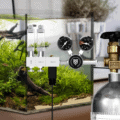
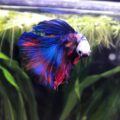


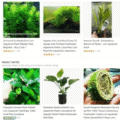
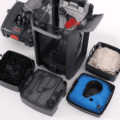
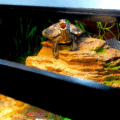

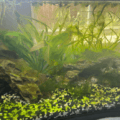
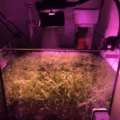
Thank you for this excellent article, I too am using the TetraCichlid flakes, along with Tetramin flakes that I am using up from a mixed tropical fish tank, I really like the Tetra products because they are reasonably priced, they do not make a mess and the flakes are good size.
I tried the Cobalt flakes but when I received it all the flakes were very small which is counterproductive for my African cichlids.
I used to give them brine shrimp occasionally but stopped this after losing some very nice fish due to bloat, I thought I was being kind to them by giving them a treat, but this is not so.
I am going to try the Spirulina 20 that you recommend hoping to improve coloring, I will comment later about the results.
I prefer flakes over pellets it just seems to work so much better all around for my African cichlids.
Hey Mershon,
Thanks for the input, I appreciate it. Let me know if the Spirulina 20 worked for you as it did for me.
Also, don’t blame yourself about the brine shrimp treats too much, we’ve all made similar mistakes out of love for our cichlids…
I have Fire mouth Chiclids I feed mine different things tru the week they get Flakes on one day then the next day Brine Shrimp then Blood Worms Krill then pellets lettuce just a variety of thing I’ve had VERY good luck with my Spoiled Kids as my Wife calls them 😂
You’ve created the ideal menu, I see. Good job!
Great information – Similar to you, I’ve come across and have tried most of your choices. I use Omega one pellets and flakes, NLS, Spirulina 20, Hikari, North Fin and Ocean Nutrition. I vary the diet and am trying to settle on two for my Mbuna, and two for my Haps. They all seem similar as they contain either salmon, krill, shrimp or other seafood. I’m surprised they are recommended as highly as they are for Mbuna. I like NLS but it seems to cloud my water – it’s almost as if I’m a mini fish food store. I’m beginning to lean towards, Spirulina 20, Omega one pellets & flakes and North Fin Veggie as staples for the Mbuna, and North Fin Cichlid and Omega one for the haps. I’ve noticed that Hikari seems to be a food all the cichlids love and improves color. I’m still investigating the benefits of Krill vs a fish as the main ingredient.
Thanks for your input, Bobby.
It’s always hit or miss with fish food at first. You try countless brands until you finally stumble upon something that works for your aquarium water and your fish… It’s why I decided to save others some time and share my findings and research. I hope it helps someone. Your input was very valuable indeed.
P.S. – the more our Cichlids stick to what they eat in the wild, the smaller the chance of them getting Malawi bloat and other types of mysterious illnesses.